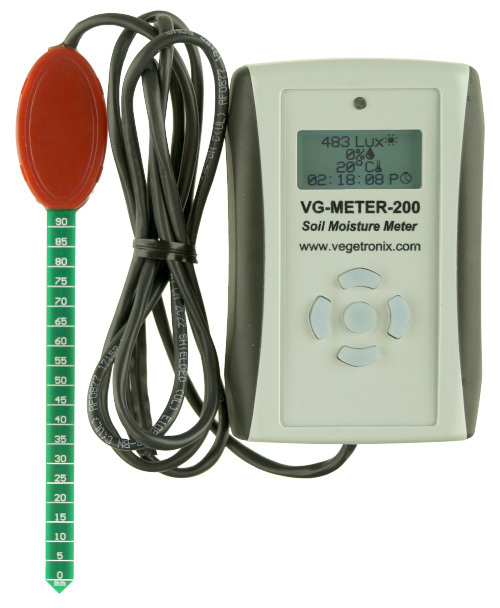Comprehending the Significance of a Moisture Meter in Protecting Against Mold and Water Damages in your house
In the world of home maintenance, the presence of wetness can usually be a quiet yet formidable enemy, capable of triggering prevalent mold and mildew development and dangerous water damages if left unchecked. Understanding the importance of a dampness meter in this battle is not just a choice but a strategic need.
Importance of Moisture Detection
Effective wetness detection methods are important for securing properties and preventing potential mold development and water damages. Dampness can leak into different structure materials, bring about architectural concerns and health risks. By utilizing a moisture meter, homeowner can proactively identify areas vulnerable to excess dampness, enabling for timely treatment and mitigation methods.
Moisture meters give precise readings of dampness levels in different products such as wood, drywall, and concrete. This data aids in identifying areas of problem, also in hidden or hard-to-reach areas. Early detection of dampness build-up enables punctual repair work or changes to avoid additional damages.

Just How Moisture Meters Work
Moisture meters play an essential role in the aggressive identification of excess dampness, helping in the avoidance of prospective mold development and water damage by supplying accurate readings of dampness levels in numerous building products. These tools work based upon different concepts, relying on their type. Moisture Meter. Pin-type dampness meters, as an example, have 2 pins that penetrate the product to measure the electrical resistance in between them. When moisture exists, it boosts the material's conductivity, causing a reduced resistance reading. Pinless wetness meters, on the various other hand, use electromagnetic sensing units to scan the material without triggering damages. These sensors discharge electromagnetic signals that permeate the product and gauge the dielectric homes, showing moisture material. Some progressed wetness meters pin both combine and pinless innovations for thorough dampness detection. Understanding exactly how moisture meters feature is crucial for timely and precise wetness degree analyses, making it possible for effective safety nets versus mold and mildew and water damages.
Finding Early Indication
Upon initial evaluation of a property, identifying refined indications of excess moisture ends up being crucial in the early discovery of possible mold and mildew development and water damage. Water stains can indicate leaks or infiltration, while peeling off paint or wallpaper might be a result of moisture jeopardizing the bond of these products to the surface area. In addition, an increase in allergy symptoms or breathing problems among passengers might recommend the visibility of mold and mildew due to excess dampness.
Protecting Against Mold And Mildew Development
Recognizing early caution indicators of excess wetness within a residential or commercial property not only enables punctual discovery of prospective mold development and water damages but also acts as a positive step in avoiding the spreading of mold and mildew. To successfully avoid mold and mildew development, it is important to address any kind of resources of dampness quickly. This can consist of fixing see page leakages in roofs, home windows, or pipes, making certain appropriate ventilation in wet areas like washrooms and kitchen areas, and using dehumidifiers in high-humidity areas. Frequently keeping the home and evaluating's plumbing, roofing, and seamless gutters can also assist in preventing water invasion that can lead to mold growth.
Along with addressing moisture sources, keeping interior moisture degrees listed below 60% can dramatically hinder mold and mildew development. Appropriate air flow, appropriate insulation, and utilizing air conditioners or fans can aid manage interior moisture levels. Keeping an eye on dampness levels in areas prone to dampness, such as cellars and creep areas, utilizing a moisture great post to read meter can likewise assist in very early discovery of elevated moisture levels and possible mold and mildew growth. By taking positive actions to stop excess dampness and mold growth, homeowners can safeguard their property and interior air high quality.
Benefits of Normal Monitoring
Regular surveillance of dampness levels in a residential property can play a crucial function in maintaining a healthy indoor atmosphere and preventing prospective mold and water damages. By regularly checking dampness degrees, property owners can discover any type of concerns immediately and take essential actions to protect against mold and mildew development and water damages.
Moreover, regular tracking permits homeowners to track patterns and fads in dampness degrees in time. By establishing a standard and monitoring changes, individuals can recognize any locations of worry or prospective susceptabilities in the home's structure. This data-driven method enables targeted interventions and upkeep efforts to address underlying problems prior to they rise visit this website into more considerable issues. Eventually, the regular surveillance of dampness levels encourages home owners to secure their property, secure their wellness, and preserve the honesty of their interior atmosphere.

Verdict

By using a dampness meter, residential or commercial property proprietors can proactively determine locations vulnerable to excess dampness, permitting for prompt treatment and reduction methods.

Checking dampness degrees in areas susceptible to dampness, such as cellars and creep areas, utilizing a moisture meter can also aid in very early discovery of elevated moisture degrees and prospective mold growth. (Moisture Meter)